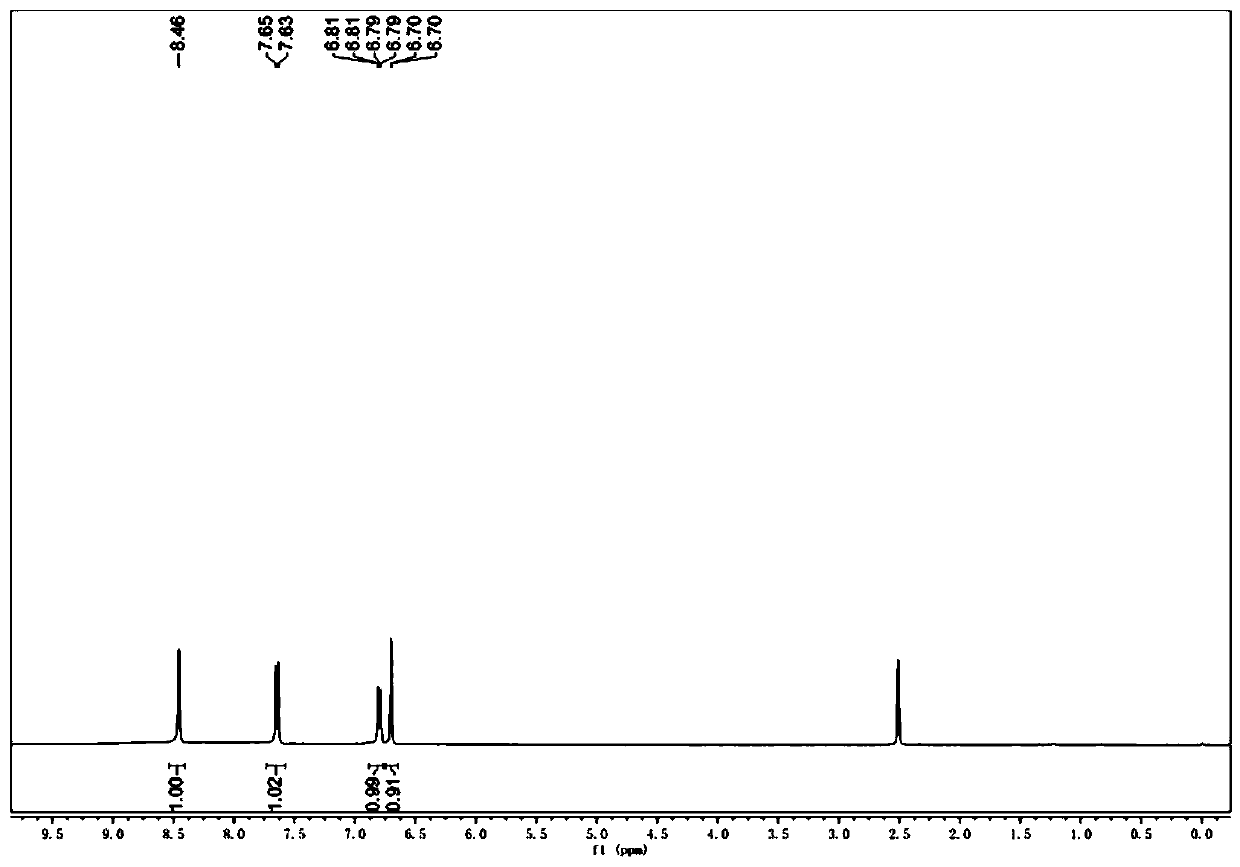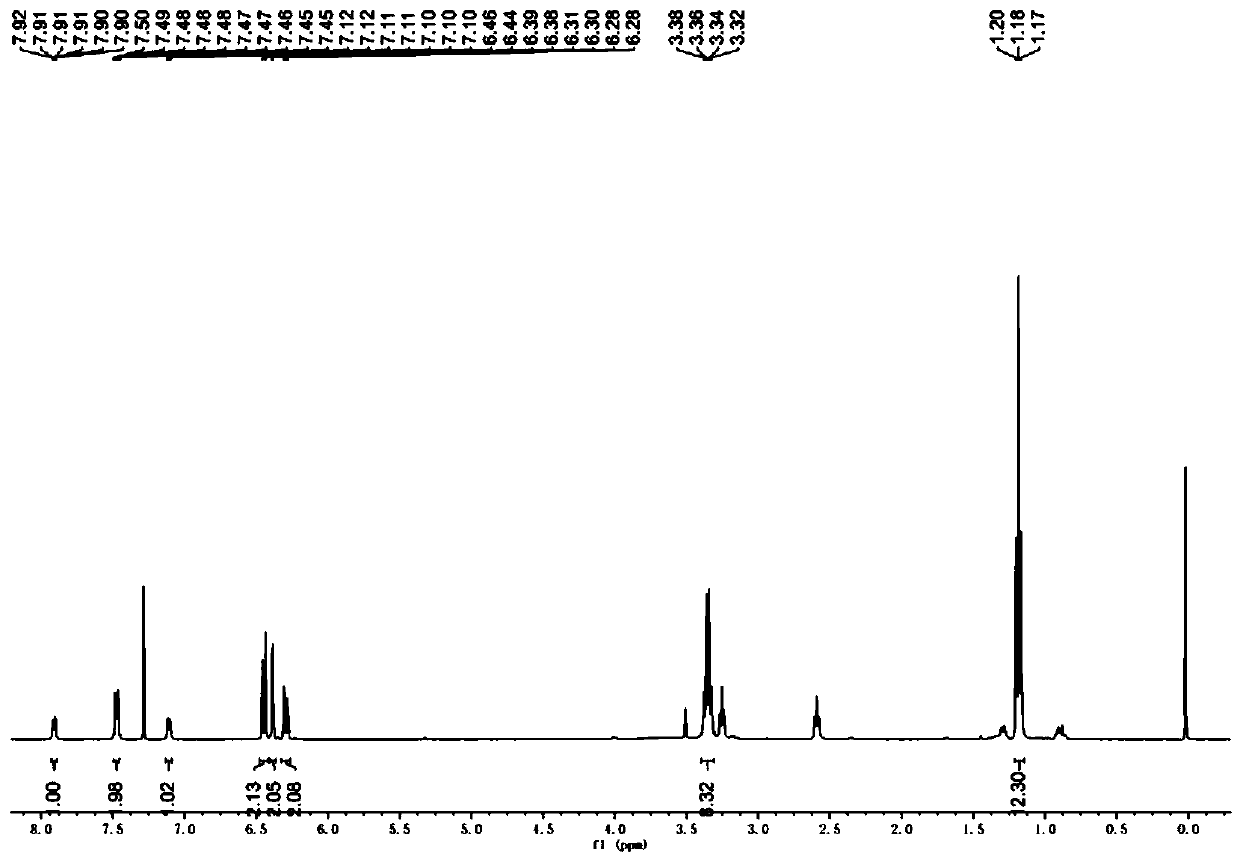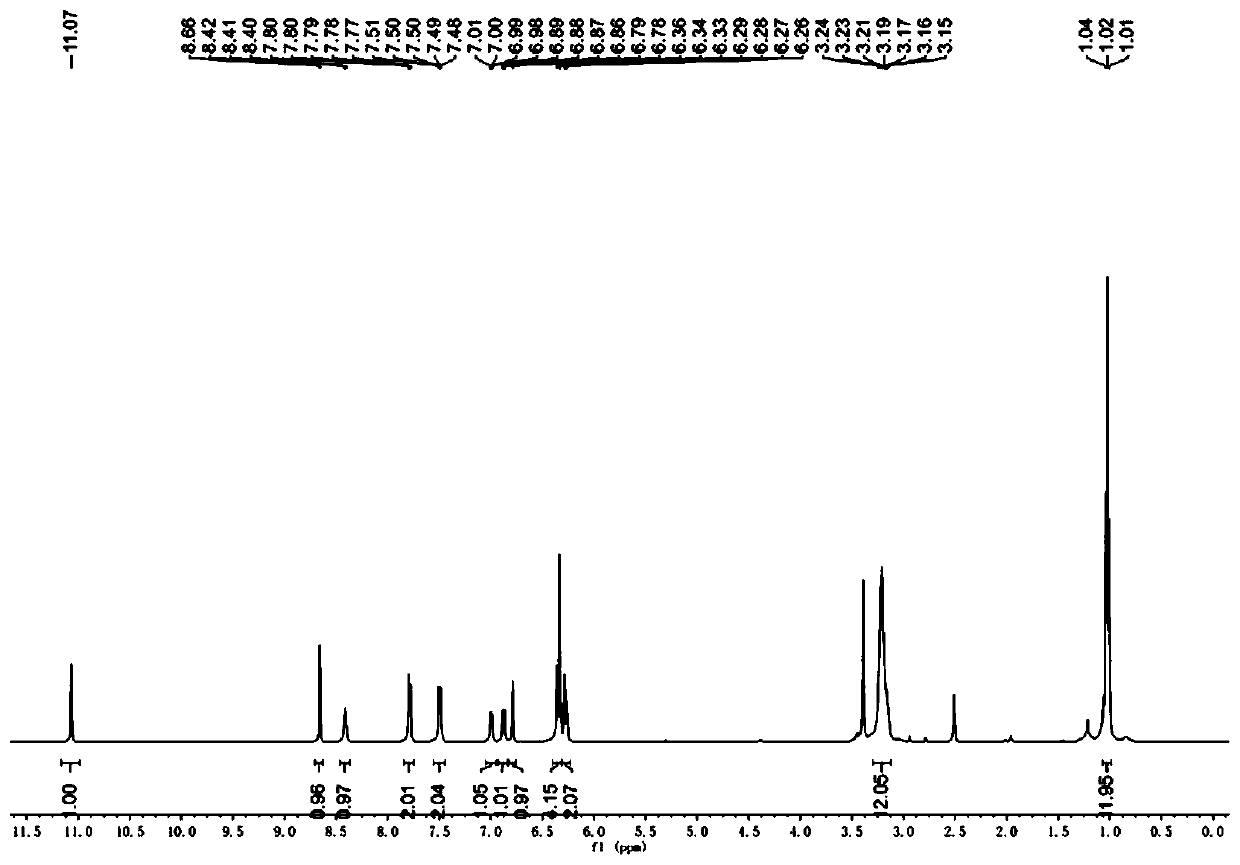Bi-locus high-sensitivity pH fluorescent probe and synthesis and application thereof
A fluorescent probe and double-site technology, applied in the field of high-sensitivity pH fluorescent probe, high-sensitivity pH fluorescent probe and its synthesis, and double-site, can solve the problems of interference of excitation light intensity of response signal and influence of detection results, etc. , to achieve the effect of simple synthesis method and high yield
- Summary
- Abstract
- Description
- Claims
- Application Information
AI Technical Summary
Problems solved by technology
Method used
Image
Examples
Embodiment 1
[0032] Example 1 Synthesis of Fluorescent Probes
[0033] (1) Synthesis of Compound 1
[0034] Using ethanol as a solvent, add 2,4-dihydroxybenzaldehyde (1.38g, 10 mmol) and Michaelis acid (1.44 g, 10 mmol), add a catalytic amount of pyrrolidine, heat and reflux for 24 hours; after cooling to room temperature Pour into water, extract with dichloromethane, dry and distill to obtain the crude product, which can be separated and purified to obtain 7-hydroxy-2-carboxycoumarin; purified by column chromatography to obtain 1.21 g of pure product, which is milky white crystal, and the yield is 61% . Its H NMR spectrum is as figure 1 shown. 1 H NMR (400 MHz, DMSO- d 6 )δ 8.46 (s, 1H), 7.64 (d, J = 8.6 Hz, 1H), 6.80 (dd, J = 8.6, 2.2 Hz, 1H),6.70 (d, J = 2.1 Hz, 1H);
[0035] (2) Synthesis of compound 2
[0036] Using ethanol as a solvent, add rhodamine b (4.79 g, 10 mmol) and ethylenediamine (6 mL, 100 mmol) into the flask, heat to reflux for 24 hours; pour into water afte...
Embodiment 2
[0039] Example 2 Spectral Test of Fluorescent Probe CR-pH Response to pH Value
[0040]The fluorescent probe CR-pH in Example 1 was weighed and prepared into a 5 mM stock solution with dimethyl sulfoxide (DMSO).
[0041] Take 10 μL of the probe mother solution and add it to a 5 mL volumetric flask, add buffer solutions with different pH values to make up the volume, shake well, and then perform the spectrum test. The excitation wavelengths are 405 nm and 561 nm. for the ordinate Figure 5 a, b. Figure 5 c is the change of fluorescence intensity at 455nm with pH value when excited at 405nm; and the change of fluorescence intensity at 588nm with excitation at 561nm. Figure 5 d is the ratio of the fluorescence intensity at 588nm to the fluorescence intensity at 455nm as a function of pH. It can be seen from the figure that with the change of pH value, the intensity of red light and blue light and the ratio of red and blue light change sharply, which proves that the probe c...
Embodiment 3
[0042] Example 3 Cell Imaging Study of Fluorescent Probe CR-pH
[0043] (1) Fluorescence imaging
[0044] Set the density to 3 x 10 5 cells / mL of HeLa cells were inoculated into sterile 35 mm imaging culture dishes in CO 2 Incubator (at 37°C, 5% CO 2 ) for more than 12 hours to allow the cells to adhere to the wall. Dilute the mother solution described in Example 2 to 1 mM, and add the diluted solution to the dead and living cell culture dish so that the final concentration is 5 μM. Continue to culture under the same conditions for 0.5 h, then aspirate the cell culture medium, wash the cells with PBS buffer three times, use 405 nm and 561 nm as excitation wavelengths, and use the blue and red channels for imaging.
[0045] (2) To study the change of intracellular pH value in the process of autophagy
[0046] Set the density to 3 x 10 5 cells / mL of HeLa cells were inoculated into sterile 35 mm imaging culture dishes in CO 2 Incubator (at 37°C, 5% CO 2 ) for more than 12...
PUM
 Login to View More
Login to View More Abstract
Description
Claims
Application Information
 Login to View More
Login to View More - R&D
- Intellectual Property
- Life Sciences
- Materials
- Tech Scout
- Unparalleled Data Quality
- Higher Quality Content
- 60% Fewer Hallucinations
Browse by: Latest US Patents, China's latest patents, Technical Efficacy Thesaurus, Application Domain, Technology Topic, Popular Technical Reports.
© 2025 PatSnap. All rights reserved.Legal|Privacy policy|Modern Slavery Act Transparency Statement|Sitemap|About US| Contact US: help@patsnap.com



